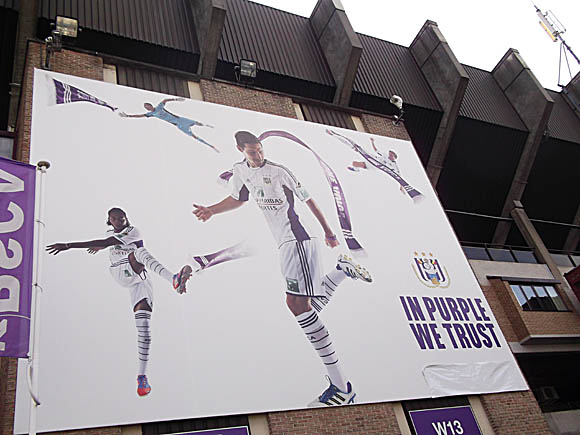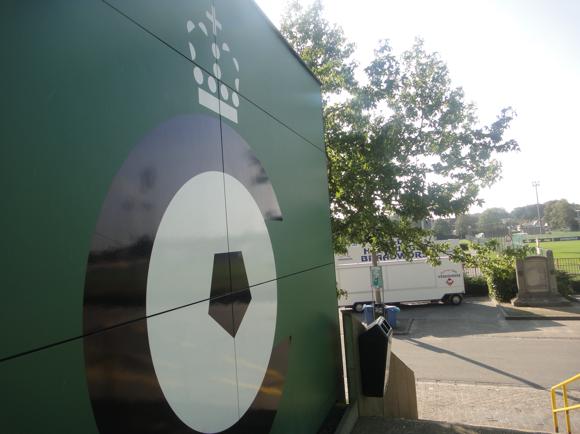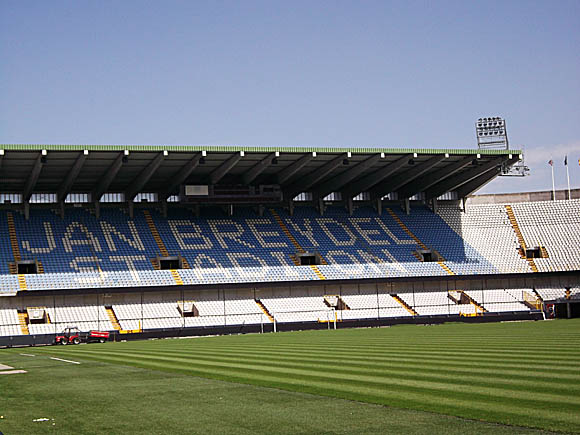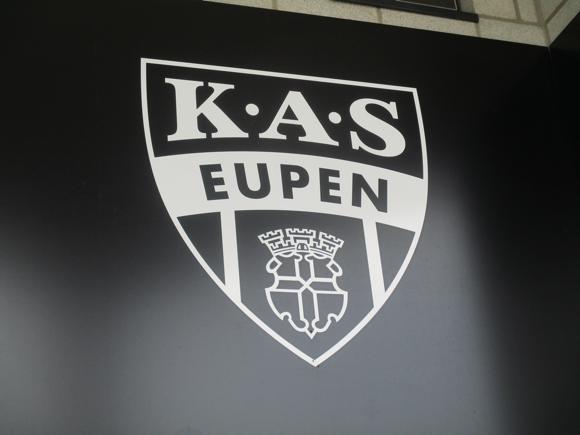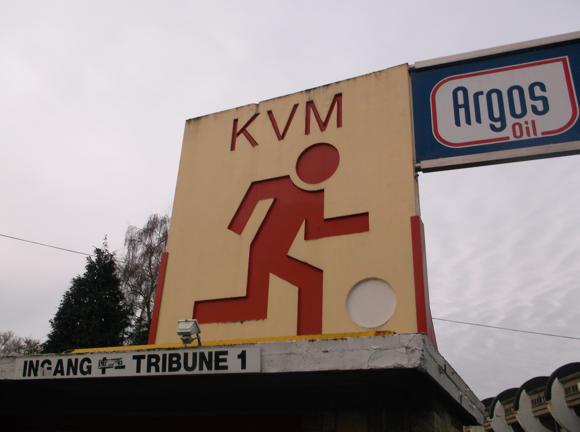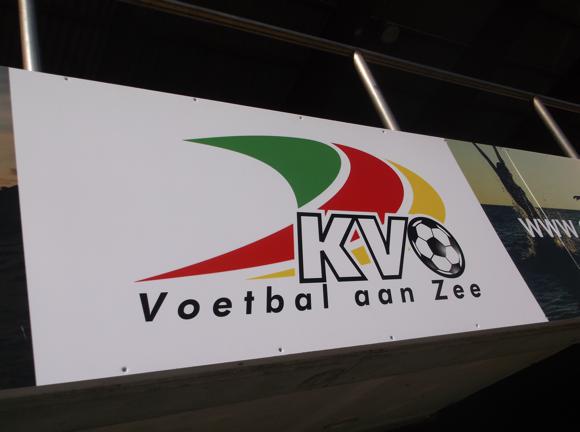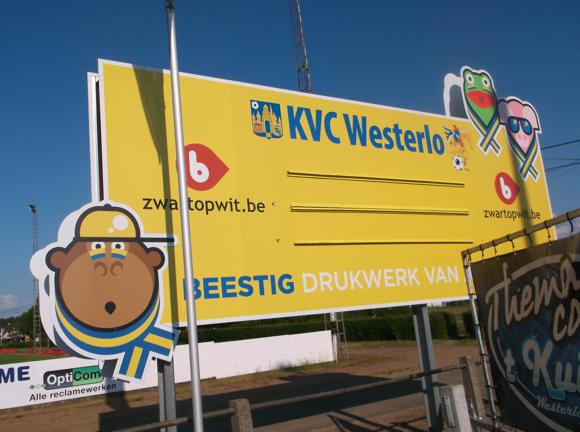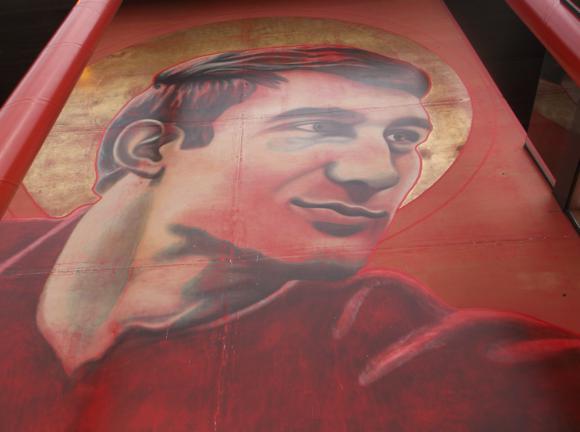A fan’s guide – the club from early doors to today
In 2019, Belgium’s oldest football club returned to Europe after more than two decades. Royal Antwerp reached a European final in 1993 but had long been in the doldrums. Two cup wins, in 2020 and 2022, and a run to the title in 2023, then underscored the extent to this historic club’s revival.
Four times Belgian champions, the last title dating back to 1957, Royal Antwerp FC have a simple badge bearing five important numbers: 1880, the date when local English students founded the Antwerp Athletic Club, and No.1, the prime matricule number, of the thousands registered with the Belgian FA since 1926.
Antwerp’s football section was created in 1887 and the later named Antwerp Football Club took part in the inaugural Belgian championship of 1895-96. Lack of silverware can be put down to the fact that a separate club was soon formed by disgruntled RAFC members: Beerschot.
In 1923, the now Royal Antwerp built a new ground in the area of Deurne, east of town. Nearly a century later, the Bosuilstadion remains the home of The Great Old.

In 1929, Antwerp won their first title, satisfyingly in a play-off over Beerschot when the city rivals finished on equal points. Despite the presence of the great Raymond Braine in the mauve of Beerschot, Antwerp triumphed with later members of Belgium’s 1930 World Cup squad in their side, midfielder Jean de Clercq and defender Henri De Deken.
Two years later, with teenager Joseph Van Beeck top scorer, Antwerp won the title outright. Also young, and equally prolific, was Flor Lambrechts, who would stay with the club until the watershed year of 1937. Irate that the board had sacked popular Hungarian coach Ignác Molnár, seven players walked out in sympathy.
A third title came during World War II, while a fourth and to date final one in 1957 provided passage to the burgeoning European Cup, and a mauling by the all-time great Real Madrid.

In the side stomped 6-0 at the Bernabéu was half-back Eddy Wauters. Due to play for the The Great Old until 1965, Wauters had just spent a year at New York Hakoah while he studied economics at Yale.
Owner of Antwerp FC since 1934, Fernand Collin was also president of Kredietbank, and he later found Wauters a post there. Rising to become the bank’s chairman, Wauters also took over Antwerp FC after the club was relegated in 1968 after 67 years in the top flight.
With Wauters at the helm for four decades or more, Antwerp remained in contention at home and abroad until the 1990s, crossing paths with Bilbao, Barcelona and Ajax in Europe.
Wauters also had clout. In 1988, he persuaded international striker Nico Claesen, unhappy at Tottenham, to return to Belgium. He was soon joined by Alex Czerniatynski, who had also played for Belgium at major finals. With veteran Yugoslav Ratko Svilar in goal and solid Rudi Smidts at the back, Antwerp kept close tabs on Anderlecht, Mechelen and Bruges, European finalists in this great era for Belgian football.

In 1990, RAFC enjoyed their own run in Europe, making the quarter-finals of the UEFA Cup, although it first required the so-called Miracle of Vitosha. Bringing a goalless draw to Antwerp, the Great Old reversed a 4-3 scoreline with the last kick of the game after being 3-1 down to the Bulgarian visitors from Sofia.
With the popular Walter Meeuws coming as coach, Antwerp eventually claimed silverware after a 22-penalty shoot-out in the 1992 Belgian Cup Final with Mechelen. It was 42-year-old goalkeeper Svilar who put away the decisive kick and 40-time Belgian Leo Clijsters who missed Mechelen’s.
With Claesen signing for Ekeren for a single season, Czerniatynski claimed the scoring rights to push Antwerp towards their only European final, the Cup-Winners Cup of 1992-93. It took a penalty shoot-out over Glenavon, five goals from Czerniatynski in a 7-6 aggregate, eventual extra-time win against Admira, a late away goal by the same man at Steaua Bucharest and an equaliser from him when Spartak Moscow when 1-0 up early in the second leg of the semi-final in Antwerp.

Unhappy that Svilar had let in four against Admira, Meeuws replaced the goalkeeper with his compatriot, Stevan Stojanović, the hero captain of Red Star Belgrade’s 1991 European Cup triumph. For Antwerp’s big final day at Wembley, a Stojanović error led to Parma scoring early on. Despite their swift equaliser, RAFC were then outclassed by the Italians.
With chairman Wauters unhappy with Meeuws’ choice of goalkeeper for the final, the former Belgian international left for Gent. RAFC went into a slow decline before relegation in 1998 and 2004.
It was well over a decade before Antwerp emerged from the second-tier Tweede Klasse in 2017, overcoming Roeselare in the play-off to decide the season’s champions. Bringing the wily Hungaro-Romanian László Bölöni as coach, Antwerp followed a solid first season back in the top flight with impressive wins over Anderlecht, Liège and Gent in 2018-19.

Holding their nerve after conceding a first-minute goal in the Europa League play-off with Charleroi, RAFC hit back with two goals from Dieumerci Mbokani. The much-travelled Congolese striker, a star under Bölöni at Liège and five-time Belgian league winner, then flew out of the blocks in 2019-20 with four goals in the first two league games.
His red card before half-time in the Europa League play-off with AZ Alkmaar, however, hampered Antwerp’s European return in August 2019. The Great Old had gained a 1-1 draw in Holland and staged the second leg at the national stadium in Brussels, only for a late equaliser from AZ ruin the party, Antwerp already down to nine men.








Stadium Guide
The field of dreams – and the stands around it




Looking as venerable as the club it has served since opening in 1923, the Bosuilstadion now has a capacity of 15,000, as compared to the 55,000 who gathered here to watch hosts Belgium fall 2-1 to Franz Beckenbauer’s West Germany in the Euro semi-final of 1972.
It is no coincidence that, after staging many clashes with Holland, not to mention the Cup-Winners’ Cup replay of 1964, the last time the Bosuilstadion saw full international action was for the visit of Brazil in 1988.
The first game witnessed here, shortly after the Bosuilstadion opened in the district of Deurne north-east of town in 1923, was Belgium’s 2-2 draw with England, the first points the visitors had dropped against European opposition. In goal that day was winger Désiré Bastin, the only Antwerp player who had won Olympic gold for Belgium in their home city back in 1920.
Although, with its oval shape, the Bosuilstadion most resembles the Olympic Stadium in Amsterdam that hosted the Games in 1928, it was the Olympic Stadium across town, home of Beerschot, which welcomed the world’s most prestigious sporting event eight years earlier.

It was only as recently as 2017 (!) that the original Tribune 1 stand from 1923 was demolished and replaced.
Part of the reason for the lack of redevelopment was the idea to construct a modern Eurodome, first mooted in the late 1980s when Antwerp were riding high, then again before the Euro 2000 tournament co-hosted by Belgium and Holland. Nothing came to fruition.
In 2018, with RAFC again a top-flight proposition, it was announced that the club would be staying at the Bosuilstadion, which will completely modernised from 2019 onwards. A 23,000-capacity stadium will be built, with three new stands, a roof and a high-tech security system.
For the time being, only three stands are in use: main Tribune 1 along one sideline, and so-called sfeertribune 2 opposite, flares and noise bursting out of the nearest sectors to the north goal, where Tribune 3 also accommodates home fans and around 800 visiting ones in the sector Z5 nearest Tribune 1.
getting there
Going to the stadium – tips and timings

The stadium has its own stop, Deurne Antwerp Stadion, on tram line 5, ten stops/ten minutes from Astrid closest to Antwerp train station. Exit right out of the station building, keeping the zoo to your right, cross Koningin Astridplein and head downstairs to the lower level. Trams run every 10mins Mon-Sat, every 15mins Sun.
Those downloading the RAFC app can arrange a free transport ticket on match days.
getting in
Buying tickets – when, where, how and how much

With average gates hovering around 13,000, and a capacity of 15,000, buying on the day is usually possible (take ID) but advance purchase is wise.
The Ticket Corner by the club shop is always open on Thursdays from noon to 6pm, and 3hrs before kick-off, 1hr after final whistle on match days. In the run-up to a home game, it should be open Wed & Fri, noon-6pm as well.
Online purchase is also possible, but you have to register first. For all enquiries, contact ticketing@rafc.be.
Average ticket prices are €21, under-16s €6, also the same charged to away fans.
what to buy
Shirts, kits, merchandise and gifts

By entrance A near the main stand, the Fanshop (Wed-Fri noon-6pm, Sat 10am-4pm, match days 3hrs before kick-off, 1hr after final whistle) offers red-and-white souvenirs a-plenty, current first kit being all red, away strip white, both with yellow trim, and third black with gold sleeves.
Where to Drink
Pre-match beers for fans and casual visitors



By the tram stop on the main road, The Great Old is a traditional tavern that has upgraded its décor and kitchen since RAFC became a top-flight proposition once again. On the menu you now find beef stew, ribs and steaks but on match days the Cristal and De Koninck beers still flow out of the taps as singing rings around the place. It’s still big enough to contain a table for Belgian billiards, with a large terrace open at either end of the season.
Around the ground, beers and snacks are sold with cashless payments – download the RAFC app to upload the right amount.


